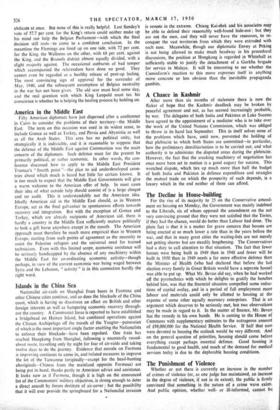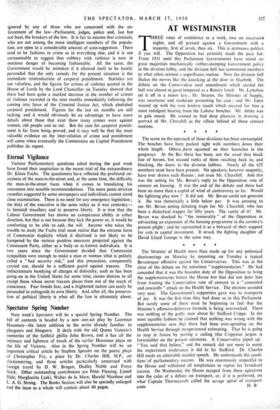The Punishment of Violence
Whether or not there is currently an increase in the number of crimes of violence (or, as one judge has maintained, an increase in the degree of violence, if not in its extent), the public is firmly convinced that something in the nature of a crime wave exists. And public opinion, whether well- or ill-informed, cannot be! ignored by any of those who are concerned with the en- forcement of the law‚ÄĒParliament, judges, police and, last but not least, the breakers of the law. It is fair to assume that criminals, who are not among the more intelligent members of the popula- tion, are open to a considerable amount of auto-suggestion. There tend to be fashions in crime as in everything else, and it is not unreasonable to suggest that robbery with violence is now in ominous danger of becoming fashionable. All the same, the Government would be mistaken if it allowed itself to be hastily persuaded that the only remedy for the present situation is the immediate reintroduction of corporal punishment. Statistics are not valueless, and the figures for crimes of violence quoted in the House of Lords by the Lord Chancellor on Tuesday showed that there had been quite a marked decrease in the number of crimes of violence recorded in the nine months immediately following the coming into force of the Criminal Justice Act, which abolished corporal punishment. Figures for the last six months are still lacking, and it would obviously be an advantage to have more details about those that exist (how many crimes were against women, old people and so on). But the case for corporal punish- ment is far from being proved, and it may well be that the most valuable evidence on the inter-relation of crime and punishment will come when eventually the Commission on Capital Punishment publishes its report.



































 Previous page
Previous page